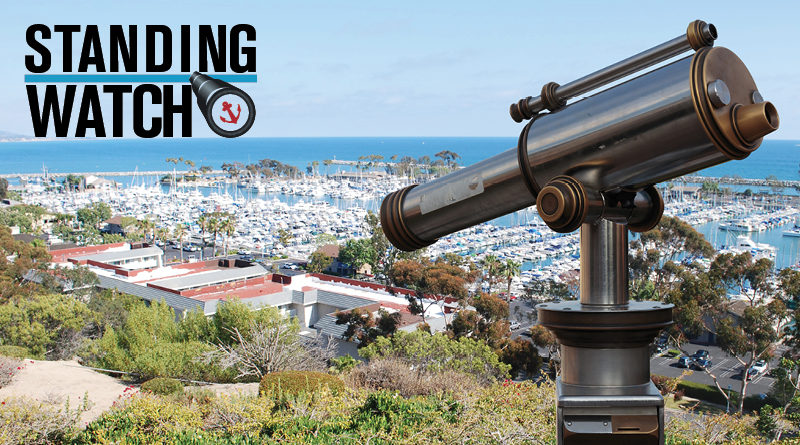It’s back: New proposal takes aim at 12-month fishing license
Assembly member Jim Wood takes the torch from former State Sen. Tom Berryhill and challenges California’s calendar-based scheme.
SACRAMENTO—How’s this for a clichéd start to an article: The definition of insanity is repeating the same act over and over again but expecting a different result. Then again “insane” isn’t the best way to describe legislative efforts and a public relations campaign to reform California’s fishing licensing scheme. The better word to use: persistent.
California’s angling community lost a legislative ally when Tom Berryhill was termed out of the State Senate in 2018. He had also exhausted his time in the Assembly, meaning the legislator who championed fishing license reform in Sacramento would no longer be around to challenge the regime requiring anglers to seek new permission to fish in state waters at the start of each year.
Berryhill, to refresh your memories, tried three times to change California’s fishing license regime. Any fishing license purchased within California will expire on Dec. 31 of any given year, regardless of purchase date. Each of Berryhill’s attempts to change California’s regime to a 12-month fishing license system failed to make it out of the legislature.
So here we are in 2019 – Berryhill is no longer in Sacramento but another legislator has picked up the mantle and proposed legislation to do away with California’s calendar-based regime and replace it with a 12-month system.
Buy a fishing license, keep it for 365 days – seems like a common sense solution, as many within California’s angling community have long argued. After all why would anglers pay for a license in, say, June, when it will only expire six months later (and purchased at the same price it was offered a few months earlier)?
The powers that be, of course, maintain the situation is far more complicated than simply dropping a calendar-based system for one allowing anglers to maintain a fishing license for 365 days. There are administrative barriers, costs, infrastructure issues, etc.
Yet a handful of legislators still believe they can break through and achieve fishing license reform before this year is over. Those legislators – Assembly member Jim Wood and more than a dozen co-authors – introduced Assembly Bill 1387 on the legislative floor. Wood and his colleagues proposed to switch California’s fishing licensing system from a calendar-based scheme to 12-month regime. (See FishRap for complete details of the proposal.)
Time will tell whether Wood’s proposal will accomplish what legislators ahead of him couldn’t, but groups such as the California Sportfishing League, or CSL, hope 2019 will be different than years past.
CSL is quick to point out the need for a 12-month fishing license regime. California, for example, is home to the lowest fishing participation, per capita, in the nation, CSL staff recently mentioned in a released statement. The low participation rate persists despite nearly 60 percent population growth in California since 1980 – a statistic also cited by CSL’s released statement. Yet anglers shouldn’t be hard so hard to find in California, CSL staff point out, as the state is home to nearly 40 million people and features one of the longest coastlines in the country. There are also thousands upon thousands of freshwater lakes, rivers and streams within California, giving anglers here even more opportunities to drop a line in the water.
Why the low fishing participation rates, then? Some of the blame, according to CSL staff, falls on California’s antiquated fishing license scheme.
“A leading contributor to declining fishing participation rates is costly fishing licenses that are not valid a full 365 days from the date of purchase,” CSL staff said in a released statement. “California’s calendar-based fishing licenses expire on December 31st of each year, regardless of when purchased. Because most anglers will not pay full price for a license that is not valid a full 365 days from the date of purchase, California Department of Fish and Wildlife … fishing license data reveals that annual license sales peak in the first quarter of the year and then decline significantly by spring, even as weather warms and outdoor activity increases.”
CSL staff went on to point out 14 states adopted a 365-day fishing license system, as a direct response to reforming away from calendar-based regimes.
“States that offer a 365-day license are outperforming revenue of states that only offer a calendar-based license,” the CSL press release continued.
Other statistics shared by CSL staff:
- California’s fishing license cost is second-highest in the country (behind Washington state)
- The cost of an annual resident fishing license in California has increased 216 percent since 1986
- A fishing license in California costs 110 percent more than the national average.
There are certainly other issues affecting fishing participation on California, but could a 365-day (or 12-month) fishing license help buckle the backward trend of angler engagement?



Why not use the drivers license model for fishing licenses?
Why not use the same process as drivers lic. It shouldn’t be any different to determine if it was expired…. officials have access to the current date!